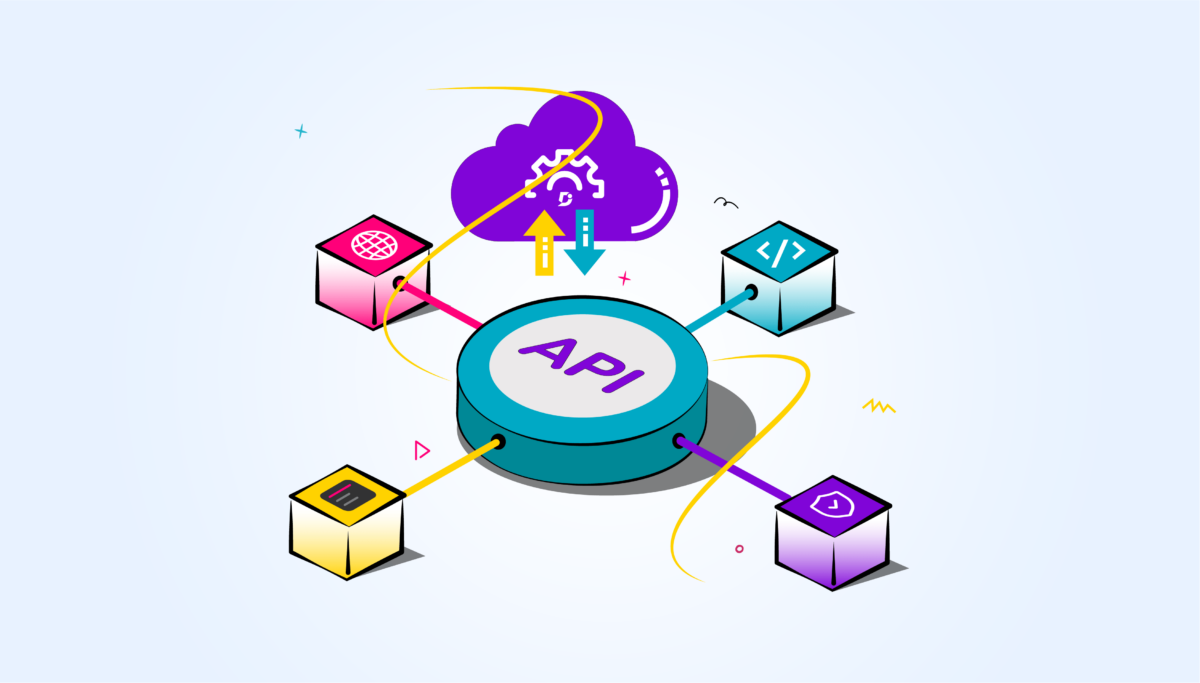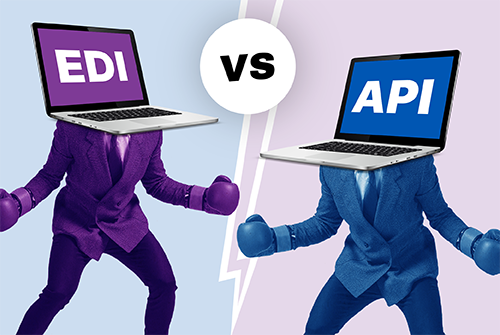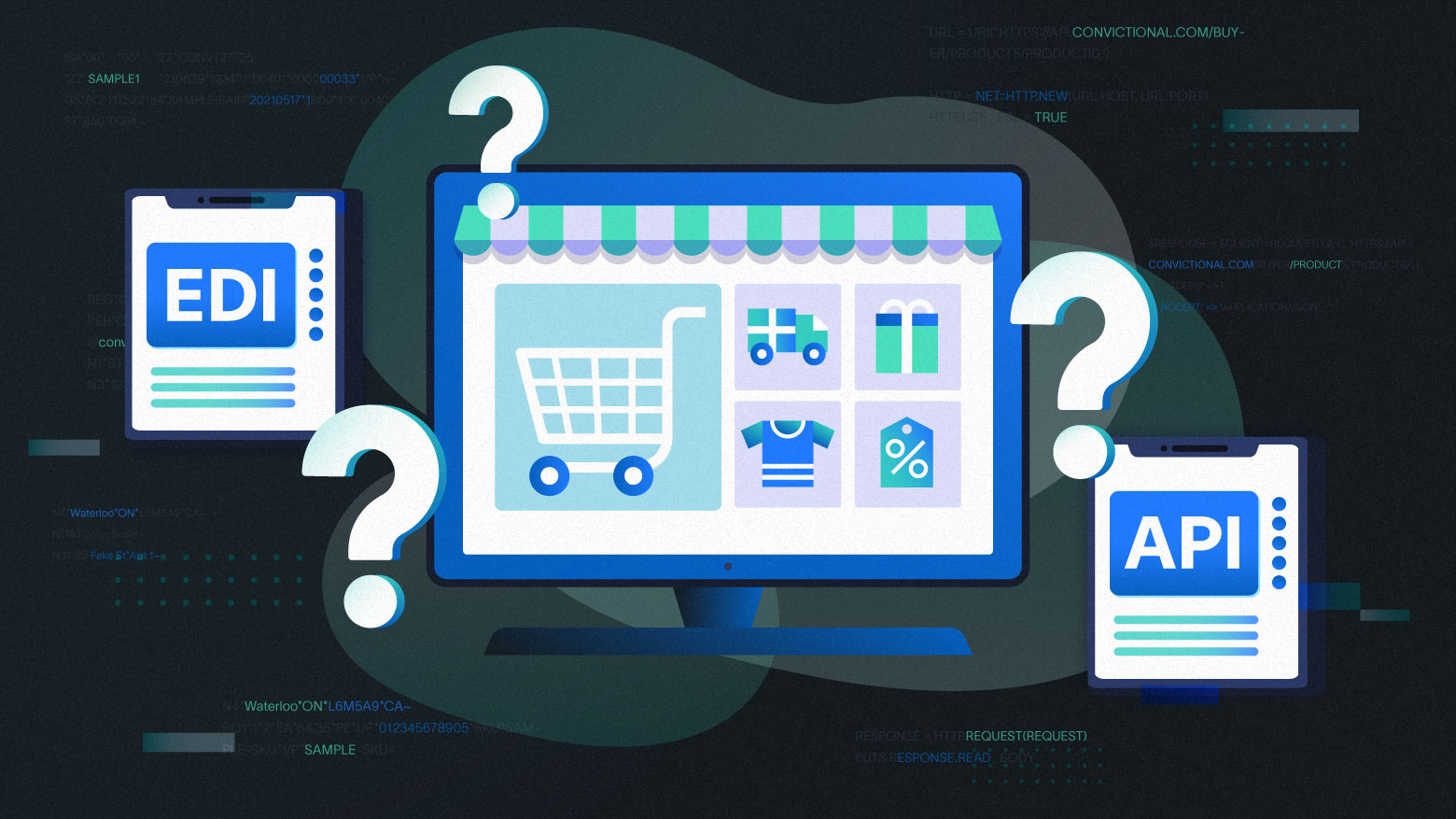EDI vs API: Which is better for your business?
In today’s data-driven world, seamless exchange of information between businesses is crucial. But with two prominent methods available – Electronic Data Interchange (EDI) and Application Programming Interface (API) – choosing the right one can be a challenge. This comprehensive guide dives deep into the EDI vs API debate, helping you understand their core functionalities, strengths, and weaknesses.
We’ll explore the key factors to consider when making this decision, guiding you towards the optimal data exchange solution for your specific business needs. Whether you’re dealing with traditional industries or modern web-based applications, this guide equips you with the knowledge to choose the right tool for the job.
Understanding the Difference Between EDI and API
What is EDI (Electronic Data Interchange)?
Imagine a world where businesses communicate like clockwork, exchanging crucial documents like invoices and purchase orders seamlessly. That’s the power of Electronic Data Interchange (EDI). It’s a standardized method for electronically exchanging business documents between companies. Think of it as a universal language for business transactions, ensuring data accuracy and reducing errors. EDI operates using pre-defined formats, such as EDIFACT and ANSI X.12, which guarantee consistent data structure regardless of the software used by trading partners.
What is an API (Application Programming Interface)?
While EDI focuses on structured documents, Application Programming Interfaces (APIs) take a different approach. Imagine an API as a friendly waiter in a high-end restaurant. It acts as a messenger between different software applications, allowing them to request and receive specific data. APIs provide a set of instructions and rules, enabling applications to “talk” to each other and share information seamlessly. This opens doors for real-time data exchange and integration between various applications, fostering a more dynamic and connected business ecosystem.
Key Factors to Consider When Choosing Between EDI and API
Choosing between EDI and API hinges on several critical factors that impact your specific business needs. Let’s delve into these key considerations:
Purpose of Data Exchange
– Structured Business Documents: If your primary focus is exchanging standardized business documents like invoices, purchase orders, and shipping notifications, EDI shines. Its pre-defined formats ensure seamless data transfer and minimize errors.
– Integration and Real-Time Data: Need to integrate various applications and facilitate real-time data exchange? APIs take the lead. Their flexibility allows applications to request and receive specific data on demand, fostering a more dynamic and interconnected business environment.
Trading Partners and Industry Standards
– Established Industries: Operating in a well-established industry with standardized document formats (e.g., retail, manufacturing)? EDI reigns supreme. It’s widely adopted in these sectors due to its reliable and secure data exchange for traditional documents.
– Modern Applications and Cloud Services: Working with modern web-based applications and cloud services? APIs are the way to go. Their ability to integrate seamlessly with various software solutions makes them ideal for the fast-paced world of cloud computing.
Speed and Security Requirements
– Batch Processing vs. Real-Time: EDI typically operates in a batch-oriented manner, meaning data exchange might not be instantaneous. This can lead to potential delays depending on your specific setup.
– Faster Data Exchange: APIs offer real-time capabilities, allowing for near-instantaneous data exchange between applications. This is crucial for businesses requiring immediate access to updated information.
– Security Considerations: Both EDI and API implementations require robust security measures. EDI often utilizes secure data transfer protocols, while APIs need careful attention to access controls and authentication methods.
Advantages and Disadvantages of EDI and API
When making your decision, it’s crucial to understand the strengths and weaknesses of both EDI and API. Here’s a breakdown:
Advantages of EDI
– Standardized Format: EDI boasts a standardized format like EDIFACT or ANSI X.12. This ensures consistent data structure across different software systems, minimizing errors and streamlining data exchange.
– Secure and Reliable: EDI offers robust security features for transmitting sensitive business documents. Secure data transfer protocols ensure the integrity and confidentiality of exchanged information.
– Industry Leader: In established industries like retail and manufacturing, EDI is the well-established champion. Its secure and reliable data exchange for traditional documents makes it the go-to choice for many businesses.
Disadvantages of EDI
– Complex Setup and Maintenance: Implementing and maintaining EDI can be a complex endeavor. The initial setup costs can be high, and ongoing maintenance requires dedicated resources or third-party vendors.
– Limited Flexibility: EDI excels at exchanging specific document types. Integrating with diverse applications or facilitating real-time data exchange can be challenging due to its structured format.
– Potential Delays: EDI typically operates in batches, meaning data exchange might not be instantaneous. This can lead to potential delays depending on the frequency of batch processing.
Advantages of API
– Real-Time Data Exchange: APIs offer a significant advantage in terms of speed. They enable real-time data exchange between applications, providing immediate access to updated information.
– Modern Integration: APIs are ideal for integrating with modern web-based applications and cloud services. Their flexible nature allows seamless communication between various software solutions, fostering a more dynamic business environment.
– Scalability and Adaptability: APIs are highly adaptable and scalable. As your business grows and your data exchange needs evolve, APIs can easily accommodate these changes by integrating with new applications.
Disadvantages of API
– Development Expertise: Implementing an API can require some development expertise. Depending on the complexity of your needs, you might need in-house developers or external resources to set up and maintain your API infrastructure.
– Security Considerations: Security is paramount with APIs. Careful attention needs to be paid to access controls and authentication methods to prevent unauthorized access to sensitive data.
– Trading Partner Adoption: While APIs are gaining traction, they might not be universally adopted by all your trading partners. This could necessitate using a combination of EDI and API for comprehensive data exchange.
When to Use EDI and When to Use API
Choosing between EDI and API depends on the specific needs of your business. Here’s a framework to guide your decision:
Use EDI When:
- You primarily exchange standardized business documents like invoices, purchase orders, and shipping notifications. (e.g., EDI is ideal for traditional industries like retail, manufacturing, and transportation)
- Your trading partners already use EDI and established industry standards like EDIFACT or ANSI X.12 are in place.
- Security and reliability are paramount for exchanging sensitive business documents.
- Batch processing timelines are acceptable for your data exchange needs.
Use API When:
- You require real-time data exchange and immediate access to updated information.
- Integration with modern web-based applications and cloud services is crucial for your business operations.
- Scalability and adaptability are essential to accommodate future growth and evolving data exchange needs.
- Your trading partners are comfortable using APIs for data exchange.
In some cases, a combination of EDI and API might be the most effective solution. For instance, you can leverage EDI for exchanging core business documents with established partners while using APIs for real-time data exchange with newer applications or partners not yet on board with EDI.
Conclusion
Stop the EDI vs API confusion! At ONextDigital, our Web Development Services can help you implement the optimal data exchange solution for your business needs. We specialize in building secure and scalable applications that seamlessly integrate with both EDI and API technologies. Let’s unlock the power of efficient data exchange and propel your business forward. Contact us today for further information.








